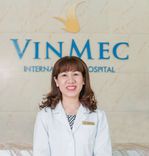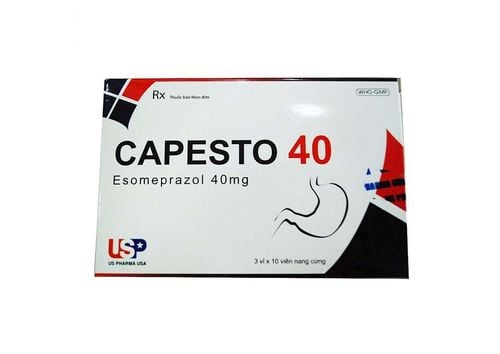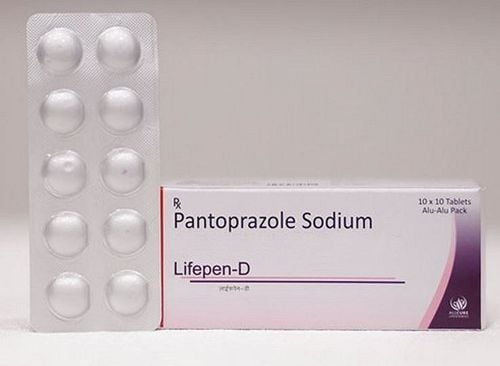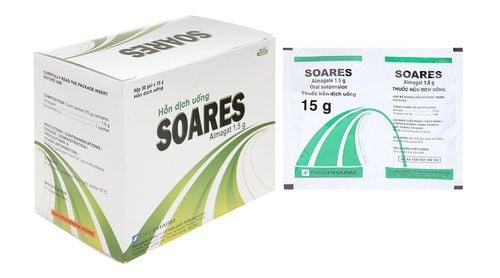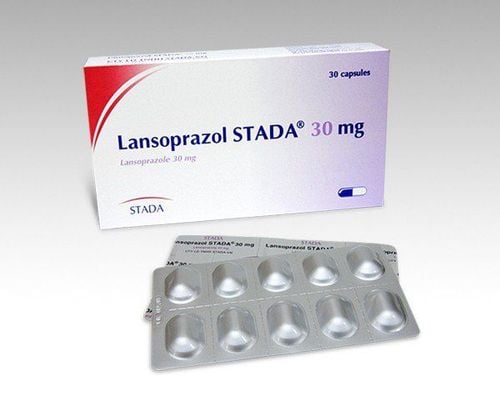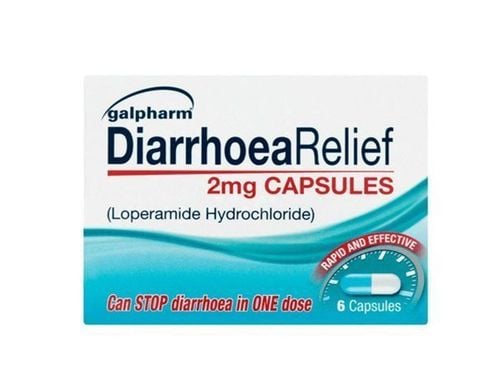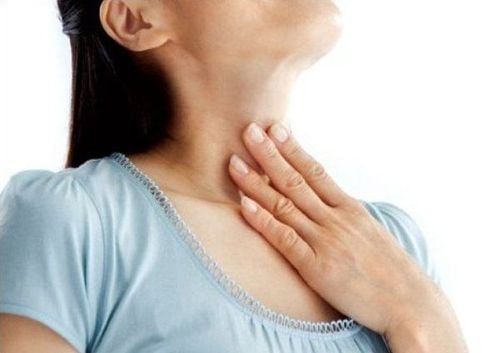This is an automatically translated article.
The article is professionally consulted by Doctor Vo Thi Thuy Trang, Department of Medical Examination & Internal Medicine - Vinmec International Hospital Da Nang.The main function of the esophagus is to carry food from the throat to the stomach. However, when eating habits are not healthy, the esophagus will be damaged and have some problems such as: esophageal reflux, esophagitis or worse, esophageal burns, esophageal cancer ..
.
1. Function of the esophagus
The esophagus is understood as a muscular tube connecting the pharynx to the thick skin. The esophagus is about 25 - 30cm long, has a flattened shape because the walls are close to each other. In the case of swallowing food, the esophagus is tubular.This organ is relatively mobile, attached to surrounding organs by loose structures. In the neck, the esophagus is located behind the trachea, descends to the posterior mediastinum, behind the heart and in front of the thoracic aorta, through the diaphragm into the abdomen, and connects to the stomach. The main function of the esophagus is to carry food from the throat to the stomach. The contraction of the muscles in the throat, along with the rise of the esophagus, will push food from the mouth down the esophagus. Next, the muscles in the mouth of the esophagus will relax to accept this food.
For easily digestible liquids, they fall into the stomach on their own. Thicker, harder-to-digest substances are moved through the esophagus by slow peristaltic waves of the esophagus, combined with the weight of food.
Trắc nghiệm: Làm thế nào để bảo vệ lá gan khỏe mạnh?
Làm test trắc nghiệm kiểm tra hiểu biết về gan có thể giúp bạn nhận thức rõ vai trò quan trọng của gan, từ đó có các biện pháp bảo vệ gan để phòng ngừa bệnh tật.2. Common diseases of the esophagus
2.1. Esophagitis is an inflammation of the esophagus caused by acid reflux from the stomach. The degree of esophagitis will depend on the frequency and duration of contact between the reflux substances (HCl acid, pepsin, bile, ...) with the mucosa.Causes of disease
Reflux esophagitis Caused by acid in the stomach continuously back up into the esophagus. Complications of reflux disease are chronic inflammation and destruction of the lining of the esophagus.
Allergic esophagitis Allergic esophagitis occurs when there is a high level of white blood cells in the esophagus, usually in response to an allergen or to acid reflux.
Many people with allergic esophagitis are allergic to one or more other foods, such as milk, eggs, wheat, soy, peanuts, barley, and beef. In addition, people with allergic esophagitis may be allergic to other substances such as pollen.
Drug-induced esophagitis Some drugs can destroy tissue if they stay in the lining of the esophagus for too long. It may be because you drink too little water when taking the medicine, it may be due to the stimulant nature of the drug. Drugs that can lead to esophagitis: pain relievers, antibiotics, osteoporosis drugs, cardiovascular treatments...
Infectious esophagitis Bacteria, viruses and fungi can cause esophagitis. Infectious esophagitis usually occurs only in immunocompromised people such as HIV/AIDS or cancer.

Esophagitis is easily confused with gastroesophageal reflux, so you need to pay attention to the following signs:
Chest pain: Pain around the epigastrium, between the sternum causes pain. signs of discomfort after meals. Ợ gas, heartburn when hungry. Nausea, salivation: Food and fluid back up into the esophagus causing signs of nausea. To neutralize the acid from the stomach the body produces more saliva than usual. Sore throat: Grade a reflux esophagitis affects the vocal cords, leading to inflammation and pain in the throat, hoarseness. Difficulty swallowing, bitter mouth: Esophagitis causes edematous mucosal lesions, causing difficulty swallowing, bitter mouth when eating. Treatment method
Depending on the specific symptoms, there will be a specific treatment. Medicines to treat esophagitis: antiviral drugs, anti-fungal drugs, pain relievers, drugs that inhibit gastric juice.
When the cause is a food allergy You must determine which foods are due to and limit their intake. You can also ease symptoms by avoiding spicy, acidic, and hard foods. Eat small pieces and chew thoroughly. In addition, you should avoid tobacco and alcohol, as they increase inflammation and suppress the immune system.
When the cause is due to the drug You need to drink a lot of water when taking the medicine or should take the liquid medicine. You should not lie down for 30 minutes after taking the pill.
2.2. Gastroesophageal reflux
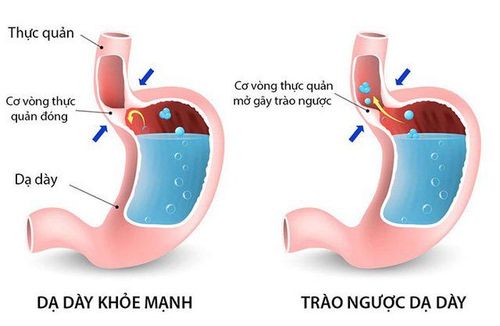
Signs of Gastroesophageal Reflux
Feeling of food getting stuck in the esophagus, difficulty swallowing or frequent hiccups Heartburn or burning sensation in front of the breastbone, sometimes spreading out of the throat Taste sour Cough or wheeze Hoarseness Sore throat. Causes of Gastroesophageal Reflux
Abnormal opening and closing of the lower esophageal sphincter will cause stomach acid to back up into the esophagus. Caused by:
Gastric hernia There is pressure on the stomach such as pregnancy or being overweight. Disease risk: There are many factors that can put you at increased risk of GERD
Obesity Drinking alcohol or other alcoholic substances Diaphragm hernia Pregnancy Smoking Dry mouth Asthma Diabetes Tissue disease link.
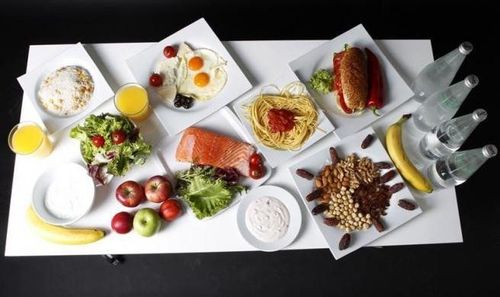
To cure acid reflux, you should divide your meals throughout the day and limit acidic and fatty foods. You also need to avoid medications such as pain relievers because they can make symptoms worse.
In addition, some gastric reflux drugs also have the effect of reducing acid such as drugs that inhibit gastric secretion, antibiotics.
In resistant cases, your doctor may refer you to a surgeon to perform an operation called fundal ligation to strengthen the lower esophageal sphincter.
Reflux prevention
You can control your GERD well:
Have a reasonable diet, high in fruits, vegetables and low in dairy products Reduce the use of high-fat foods Do not lie down immediately after eating Maintain a reasonable weight Use medicine prescribed by the doctor Do not wear tight clothes Do not smoke. 2.3. Esophageal spasm
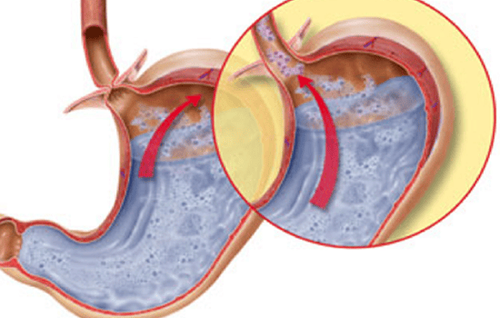
Classification of esophageal spasms
Esophageal spasm has 2 distinct types:
Diffuse esophagitis: Usually occurs continuously, occurs in a prolonged episode, often with nausea Clumped esophageal spasm Digestive system: Often causes strong esophageal spasms affecting a major area in the patient's esophagus causing very uncomfortable chest pain and sometimes difficulty breathing. Risk of disease
Currently, esophageal spasm has not been identified with a clear cause. Risk factors for the disease:
Heart disease Gastroesophageal reflux disease Eating foods that are too hot or cold Anxiety, stress Signs, symptoms of the disease Signs of spasms
Stomach spasms The signs are easily confused with common digestive disorders, so you should be on the lookout for the following signs:
Chest tightness Difficulty swallowing Nausea and vomiting
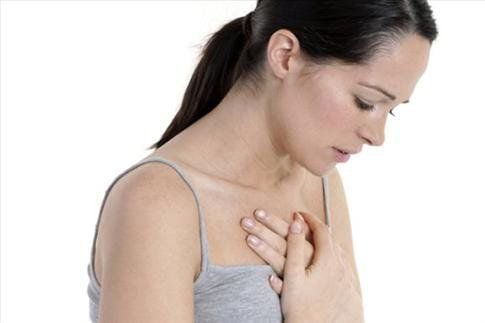
Eat soft, liquid, easy to digest foods, chew thoroughly, swallow slowly with a reasonable diet. Treatment with drugs to open the myocardium, anti-inflammatory, reduce esophageal mucosal secretions,... Esophageal lavage to avoid palpitations and difficulty breathing when lying down. Dilating and opening the esophagus to avoid stagnation of food in the esophagus. Musculoskeletal surgery Esophageal resection Botox injection Complications can occur later
The disease usually progresses slowly over a long time or in waves. Patients may die suddenly from cardiovascular reflexes or suffocate from regurgitation of food into the trachea. If not treated in time, the patient can die from malnutrition.
In addition, the disease can also cause other complications: esophageal ulcers, fibrous scarring, compression of the trachea, veins, heart, pneumonia, lung abscess, cancer, ..
2.4. Esophageal foreign body obstruction
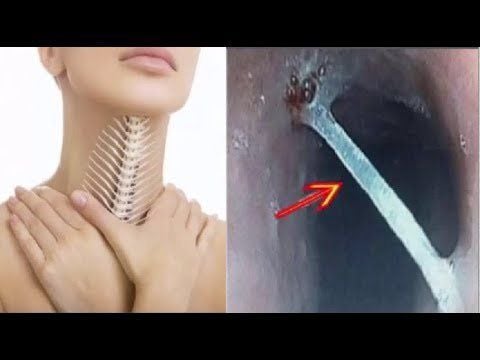
Children often swallow things such as buttons, pants, coins, keys and other small objects, etc. Adults often get false teeth, chicken bones, bones in the esophagus. fish, beef bones, pork or large pieces of meat that have not been thoroughly chewed etc. People with madness can swallow whole spoons, a knife and other objects etc. v... Symptoms of esophageal obstruction
Foreign bodies are often caught and stopped at the natural narrowing of the esophagus. If the object is smooth, it usually causes superficial ulcers on the lining of the esophagus. Sharp objects can puncture the esophagus, which can cause esophageal abscess, mediastinitis, and mediastinal effusion.
Depending on the size and surface (sharp or smooth) of the foreign body and the location of the esophageal obstruction, there are different symptoms.
Common symptoms are:
There is a feeling of entanglement and compression in the esophagus. Difficulty swallowing and pain when swallowing. Sharp and edged foreign bodies cause stabbing pain in the chest. When the foreign body causes complications, the symptoms depend on the complications in the mediastinum (mediastinitis) or pleura (pleurisy) etc. Treatment method
Esophagealoscopy and removal of malformations. It is very rare to have to open the esophagus to remove the foreign body. Only surgery when there are complications, when the foreign body is in the cardia, open the stomach to remove the foreign body. 2.5. Esophageal burn
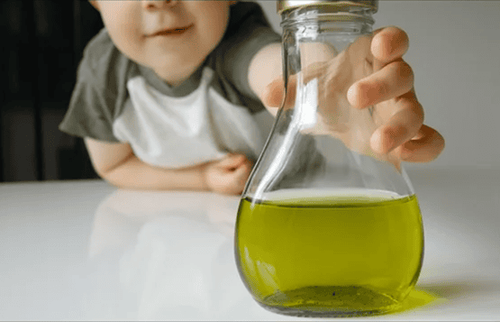
The disease is common in children due to mistakenly swallowing or mistakenly taking chemicals with strong alkaline or strong acids.
Esophageal burns can only cause mild damage to the lining of the esophagus and heal easily, but can also be severe, causing sequelae of esophageal stricture, which can cause esophageal perforation or lung infection.
Causes of esophageal burns
Chemical burns (common): alkalis, acids, bleaches, detergents... Heat burns (rare): swallowing food, hot food,... Clinical signs
Sore throat, behind the sternum Severe, continuous pain in the neck area, behind the breastbone or above the navel. Mild, after 2-3 days, the pain will be relieved, and you will be able to swallow. Severe can lead to fever, intoxication, swelling and swelling in the lips, mouth, throat, tongue; feeling short of breath. In case of esophageal burns, esophageal perforation leads to mediastinitis and peritonitis.
Severe cough, sputum production Increased salivary secretions The mucous membranes of the mouth are hollow, turning into a pseudomembranous color from white to dark gray Wheezing, hoarseness or loss of voice Difficulty swallowing, choking, painful swallowing. Severe may have esophageal bleeding and vomiting blood Methods of treatment
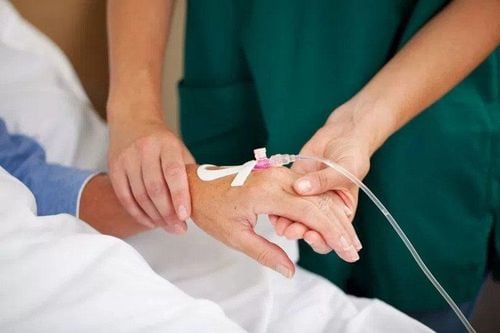
Neutralize chemical solutions:
Drink dilute base for acid burns and dilute acid for base burns. Wash the entire gastroesophageal junction with a soft and small catheter. Drink milk. Anti-infection, anti-shock:
Infusion, blood, anti-shock solutions. Use of high-dose antibiotics. Infusion of glucose, blood transfusion, plasma transfusion and amino acid-containing solution. Inject morphine. Prevention of esophageal perforation. Severe esophagitis, the doctor will appoint an esophagogastrostomy, a urinary tract to feed the body, do not eat through the mouth.
Severe burns to the mediastinum, need to open the esophagus at the neck for drainage purposes, open the stomach or jejunum for the purpose of feeding the body.
Esophageal dilation:
Performed after 6-8 weeks of conservative treatment, the purpose is to prevent esophageal stricture caused by burns
Plastic surgery:
Surgery when esophageal dilation fails.
Exploratory surgery when there are symptoms of severe pain in the nasopharynx and behind the sternum. Emergency surgery to remove the damaged part of the esophagus to preserve other functioning organs of the body.
2.6. Stomach cancer
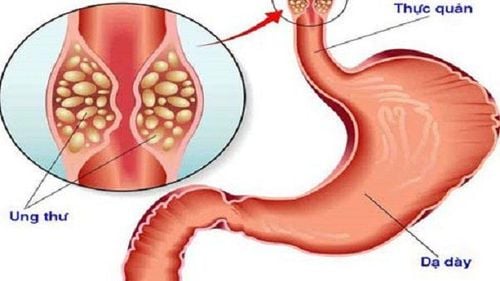
Esophageal cancer is common in people over 50 years old. Clinical symptoms can be seen:
Swallowing gradually increases, may be accompanied by regurgitation, vomiting right after eating. Large tumor compresses surrounding organs causing pain behind the sternum, shortness of breath, hoarseness, coughing up blood. In the late stages, patients often show weight loss, dryness and darkening of the skin, exhaustion. Esophageal cancer staging
Stage 0: cancer in situ Stage I: cancer that has not invaded the muscle layer Stage II: cancer has invaded the muscle or connective tissue outside the esophagus Stage III: Cancer invades the organs around the esophagus or metastasizes to the lymph nodes Stage IV: distant metastasis Treatment
Treatment of esophageal cancer is a multimodal treatment that requires a combination of many specialties including: surgery, radiotherapy and chemotherapy. Depending on the location of the tumor and the stage of the disease, the doctor chooses a reasonable treatment strategy.
Early esophageal cancer, stage 0: Treat with endoscopic mucosal resection, laser or photocoagulation. Stage I: Esophageal resection to make gastric tube indicated
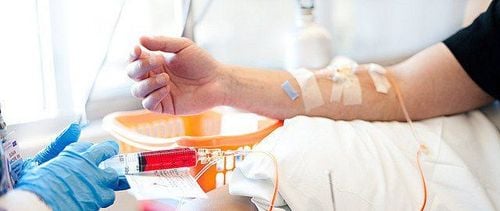
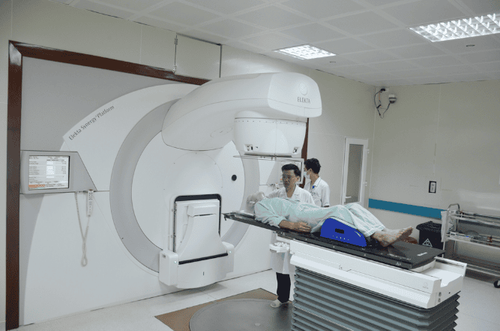
The mortality rate during surgery is low, but the survival time after surgery is short. Rarely, patients can survive for more than 5 years after surgery. Usually sustains life for 2 years.
Cancer at the point less than 1/3 of the esophagus, the rate of surgery is usually higher, the prognosis is better.
In case no treatment is carried out since the first appearance of sore throat symptoms, the survival time is only 6 months to 1 year.
When the esophagus has problems with unusual symptoms such as pain, or difficulty breathing, you should monitor and see a doctor if necessary. However, you should also improve a healthy diet, the esophagus can do its job well, there are no abnormalities, and ensure your own health.
Specialist Doctor I Vo Thi Thuy Trang is trained in gastroenterology, hepatobiliary tract and gastrointestinal endoscopy; continuously updated and received advanced endoscopic training from professors and endoscopy experts from Switzerland and Japan; participated in many domestic and international gastroenterology and endoscopy conferences.
With nearly 20 years of working at Da Nang General Hospital in the field of gastrointestinal endoscopy - hepatobiliary disease, every year, Doctor Vo Thi Thuy Trang participates in endoscopy more than 1500 cases including: endoscopic diagnosis of diseases stomach, colon such as: detecting inflammation, ulcers, polyps, cancer, finding HP bacteria, detecting cancer early in the digestive tract...; Endoscopic treatment such as: Hemostasis in gastrointestinal bleeding, esophageal varices ligation in cirrhosis, endoscopic gastrointestinal polypectomy...
Please dial HOTLINE for more information or register for an appointment HERE. Download MyVinmec app to make appointments faster and to manage your bookings easily.
